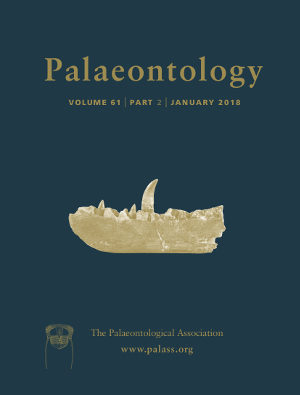Reg. Charity No. 1168330

The Palaeozoic Era is a particularly interesting period of Earth history, as it includes the formation and northward movement of a supercontinent (Pangea), dramatic climatic changes and global biotic catastrophes. Here, we analyse the palaeobiogeographical distribution of the discinid brachiopod genus Orbiculoidea and discuss its distributional patterns in light of the environmental changes that occurred throughout the Palaeozoic and the Triassic. Our results indicate that the distribution of the genus seems to have been controlled mainly by the palaeogeographical framework and by global climate change. Importantly, its spatial pattern appears to directly respond both to the formation and northward movement of Pangea and to global temperature fluctuations during the Palaeozoic. In conjunction with these two global parameters, it is likely that the distribution of Orbiculoidea was also affected by regional factors, including the presence of oceanic upwelling as well as the development and demise of continental shelves and seaways.